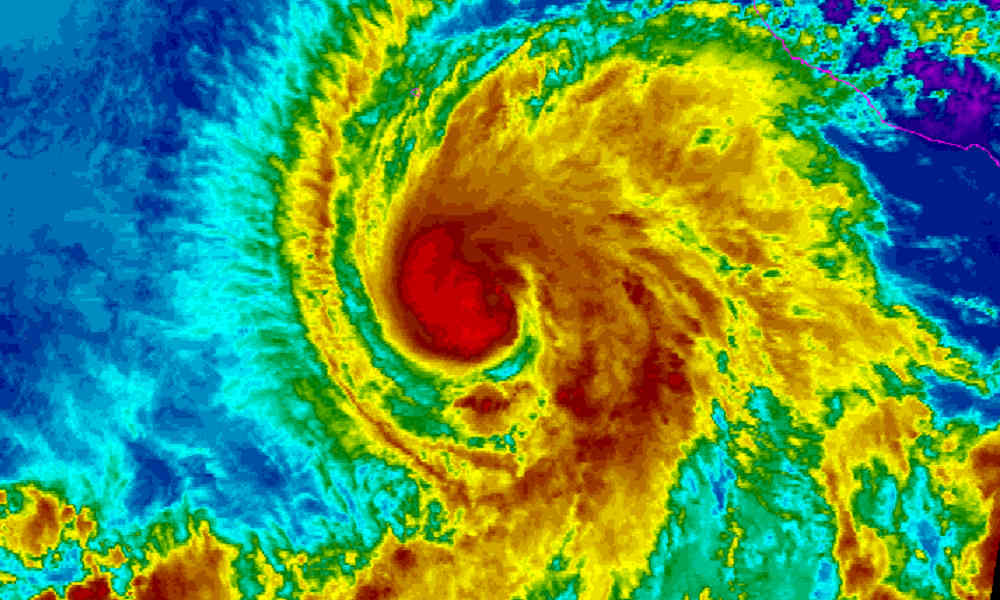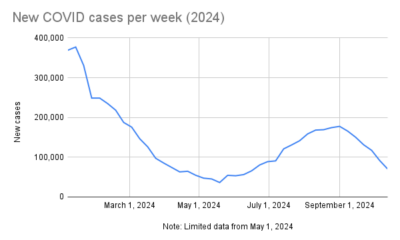World
Hurricane Aletta forms off Mexico’s Pacific coast

Tropical Storm Aletta has rapidly strengthened into a category two hurricane off Mexico’s Pacific coast, making it the first hurricane of the year in the Eastern Pacific basin, forecasters say. There is no threat to land.
As of 9 p.m. MT on Thursday, the center of Aletta was located about 740 kilometers (460 miles) southwest of Manzanillo in Mexico. The hurricane is moving towards the northwest at a speed of 9 kilometers (6 miles) per hour, which will keep it well away from land.
The U.S. National Hurricane Center (NHC) said Aletta became a category one hurricane at 2 p.m. MT, after which the storm rapidly intensified, reaching category two by 9 p.m. when its maximum sustained winds were at 155 kilometers (100 miles) per hour, with higher gusts.
“Based on how Aletta looked last evening, it would have been hard to imagine the cyclone improving in structure so drastically,” said Robbie Berg, a hurricane specialist at the National Hurricane Center. “Yet, the hurricane has continued to improve in organization.”
Aletta is forecast to strengthen further over the next 24 hours, which will bring it just below major hurricane status. “It’s not out of the question that Aletta could reach major hurricane strength on Friday,” Berg said, referring to category three.
Weakening is anticipated to begin by Saturday afternoon and should accelerate on Sunday or Monday as the storm encounters stronger shear and colder waters. Aletta is expected to remain well away from land until it dissipates on Tuesday or Wednesday.
Meanwhile, forecasters are also keeping an eye on a tropical wave which is located a few hundred kilometers (miles) southwest of Guatemala. A tropical depression is likely to form by early next week while the system moves westward off the coast of southern Mexico.
With the formation of Aletta, the hurricane season in the Eastern Pacific basin is off to an early start. The average day for the first hurricane to form in the Eastern Pacific is June 26, although hurricanes are not unheard of before that date.
According to figures released in May, NOAA’s Climate Prediction Center is expecting a near-normal or above-normal season in the Eastern Pacific basin. The outlook calls for 14 to 20 named storms, including 7 to 12 hurricanes, of which 3 to 7 become major hurricanes (category 3 or higher).
An average Eastern Pacific hurricane season produces 15 to 16 named storms, with eight to nine becoming hurricanes and four becoming major hurricanes. The Eastern Pacific hurricane season runs from May 15 through November 30, with peak activity from July through September.

-

 Legal5 days ago
Legal5 days agoArkansas Amber Alert: Trixie Studer missing from Logan County
-

 Legal7 days ago
Legal7 days agoColorado Amber Alert: Sandra Mendoza abducted in Pueblo
-

 Legal1 week ago
Legal1 week agoTexas Amber Alert: 3 children missing from Austin
-

 US News1 week ago
US News1 week agoU.S. COVID update (October 14): 70,360 new cases, 1,189 new deaths
-

 Legal2 days ago
Legal2 days ago5 killed in shooting at Fall City, Washington home, teenager arrested
-

 Legal23 hours ago
Legal23 hours agoSuspect arrested in shootings at Democratic Party campaign office in Arizona
-

 Entertainment2 days ago
Entertainment2 days agoFormer ‘Iron Maiden’ singer Paul Di’Anno dead at 66
-

 Entertainment7 days ago
Entertainment7 days agoFormer ‘One Direction’ star Liam Payne dead at 31

